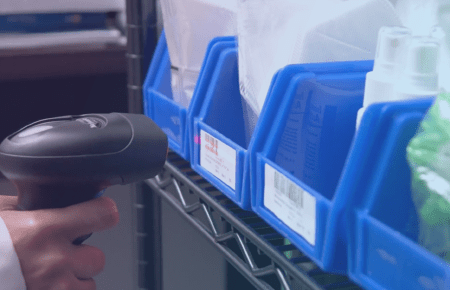1. USE A FIRST IN, FIRST OUT (FIFO) SYSTEM
Taking a FIFO approach ensures items that were stocked first are used first. This is important in healthcare settings where products such as medications and medical supplies may have expiration dates. By using the oldest stock first, facilities minimize the risk of having to dispose of expired or outdated products, which ultimately saves money.
“FIFO provides the most accurate picture of what your inventory is costing the business at any given time,” according to a Forbes article. “It aligns the current costs of the business with the actual flow of goods or inventory out of the business more accurately than any other method. This leads to better accounting and more real-time analysis on where the business stands if it has a heavy amount of inventory.”
In a FIFO system, new shipments are placed behind older stock, making the management and rotation of stock simpler and more systematic. This straightforward approach saves time during restocking, reduces errors handling supplies, and makes it easy to track lot numbers and expiration dates, which are needed in the event of recalls.
FIFO promotes the regular movement of items in inventory, which can optimize space and simplify stockroom procedures. Regular product turnover prevents overfilling storage areas and makes it easier to organize and locate supplies—a must-have in non-acute healthcare where a variety of products are stored.
2. MAXIMIZE SPACE WITH ADJUSTABLE SHELVING
Flexible shelving helps maximize space and ensure the most frequently accessed products are the most available. This makes it easy for staff to locate the items they need.
Adjustable shelf heights and configurations make it possible to customize storage spaces according to the size and shape of different inventory items. The adaptability is useful in environments where stock and item sizes vary significantly.
“Another benefit of adjustable shelving is that you can maximize your vertical space and make the most of your floor plan,” according to an article on LinkedIn. “You can do this by adjusting the number and spacing of the shelves to fit more products without compromising visibility or accessibility.”
Flexible shelving systems are designed to be robust and durable to support heavy loads. The ability to customize the stockroom setup can improve safety by ensuring that heavy items are stored at more accessible, lower levels, reducing the risk of injuries caused by lifting heavy or unstable items.


.png?h=291&w=451&rev=4f575749964c4ab58f2af9a6046a4906&hash=B7DC82E98667F00D1745B758661AAE3F)

